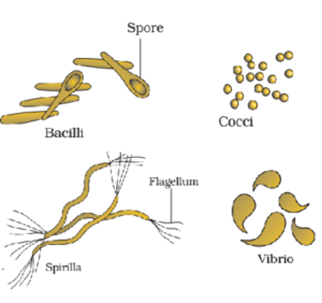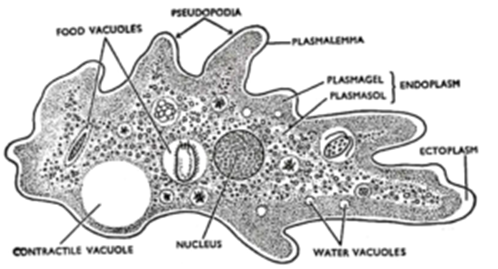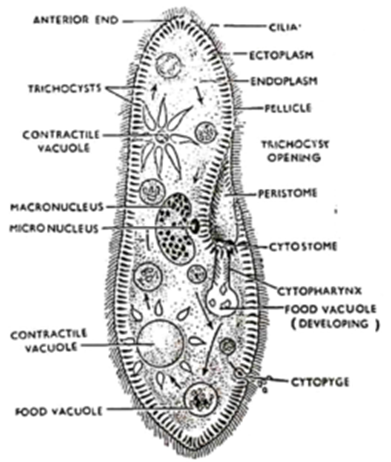Science > Biology > Classification of Microbes, Protists, and Fungi > Brief Idea
In this article, we shall get a brief idea of the classification of lower-level organisms i.e we shall study bird eye view of Kingdom Monera, Kingdom Protista, and Kingdom Fungi. In subsequent articles, we shall discuss the classification in detail. In lower-level organisms there is no tissue-level organization is present. Their one cell is capable of performing all the functions of life.
Kingdom Monera:
- Organisms of this kingdom are called lower-level organisms because no tissue-level organization is present in them. Their one cell is capable of performing all the functions of life.
- These organisms are single-celled prokaryotes and do not have a defined nucleus or organelles. Some of them have cell walls.
- Membrane-bound organelles such as the nucleus, endoplasmic reticulum, mitochondria, Golgi apparatus are absent.
- The mode of nutrition is either by synthesizing their own food (autotrophic) or getting it from the environment (heterotrophic).
- Bacteria are the sole members of the Kingdom Monera. They are the most abundant micro-organisms. Bacteria occur almost everywhere.
- Bacteria are grouped into four categories based on their shape: The spherical Coccus (pl.: cocci), the rod-shaped Bacillus (pl.: bacilli), the comma-shaped Vibrium (pl.: vibrio) and the spiral Spirillum (pl.: spirilla).
- Examples: Bacteria -Vibrio cholerae, Salmonella typhi, and Blue-green algae – Anabaena, Nostoc

Kingdom Protista (Greek – protistos – First of all):
- Organisms of this kingdom are called lower-level organisms because no tissue-level organization is present in them. Their one cell is capable of performing all the functions of life.
- They are unicellular prokaryotic organisms. They have a well-defined membrane-bound nucleus.
- Membrane-bound organelles such as a nucleus, endoplasmic reticulum, mitochondria, Golgi apparatus are present.
- The cell wall may or may not be present.
- These organisms use appendages, such as hair-like cilia or whip-like flagella for moving around.
- Their mode of nutrition can be autotrophic or heterotrophic. Amoeba and Paramecium ingest food like animals. Euglena has chlorophyll in them hence can synthesize their food in the presence of sunlight. In the absence of light, it shows the heterotrophic mode of nutrition by ingesting protists like protozoa. Thus Euglena has a dual mode of nutrition. Due to this dual mode of nutrition, they are placed in both plant and animal kingdom.
- Some examples are unicellular Amoeba, Paramecium, Euglena



Kingdom Fungi:
- Organisms of this kingdom are called lower-level organisms because no tissue-level organization is present in them. Their one cell is capable of performing all the functions of life.
- These are heterotrophic, eukaryotic, multicellular organisms. Exception yeast which is unicellular.
- Their bodies consist of long, slender thread-like structures called hyphae. The network of hyphae is known as mycelium.
- They have cell walls made of a tough complex sugar called chitin.
- Most of them are heterotrophic and absorb soluble organic matter from dead substrates and hence are called saprophytes. Those that depend on living plants and animals are called parasites. They can also live as symbionts – in association with algae as lichens and with roots of higher plants as mycorrhiza.
- Some examples are yeast, mushrooms, Penicillium.
